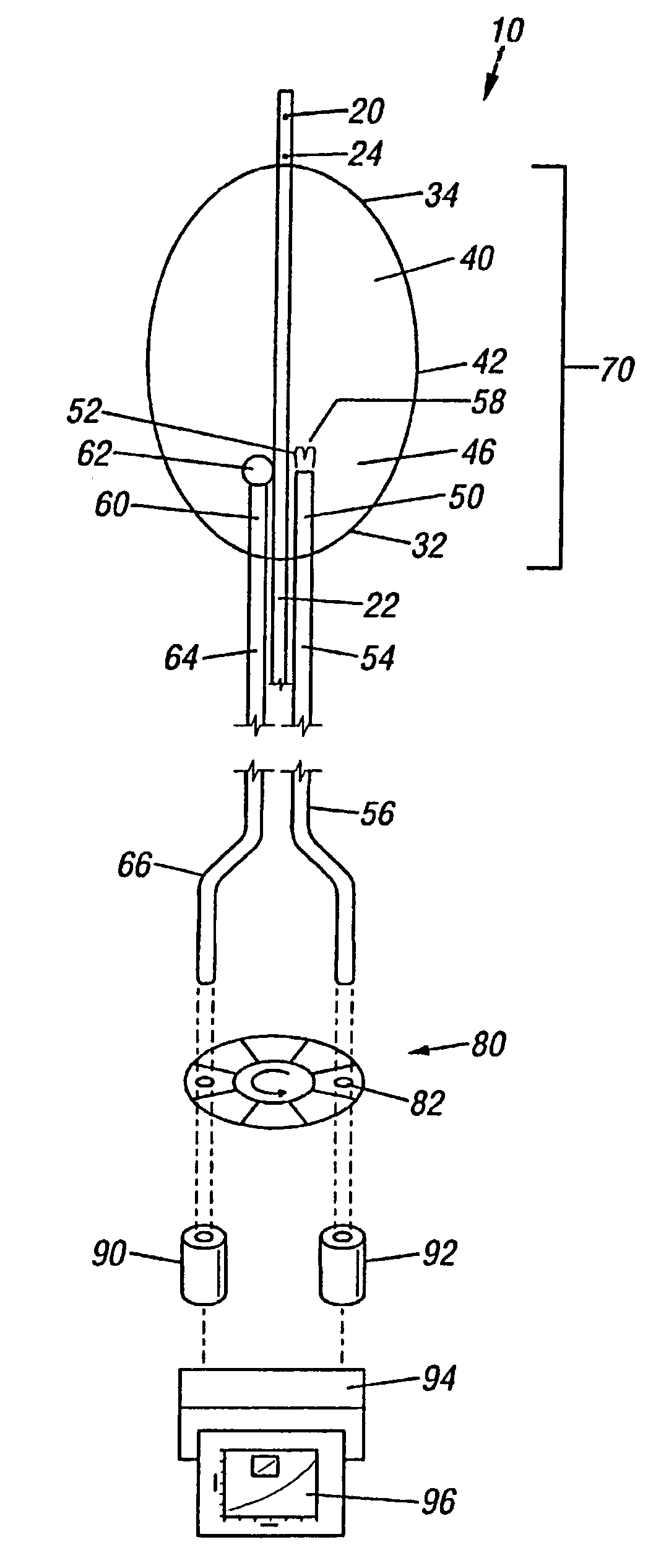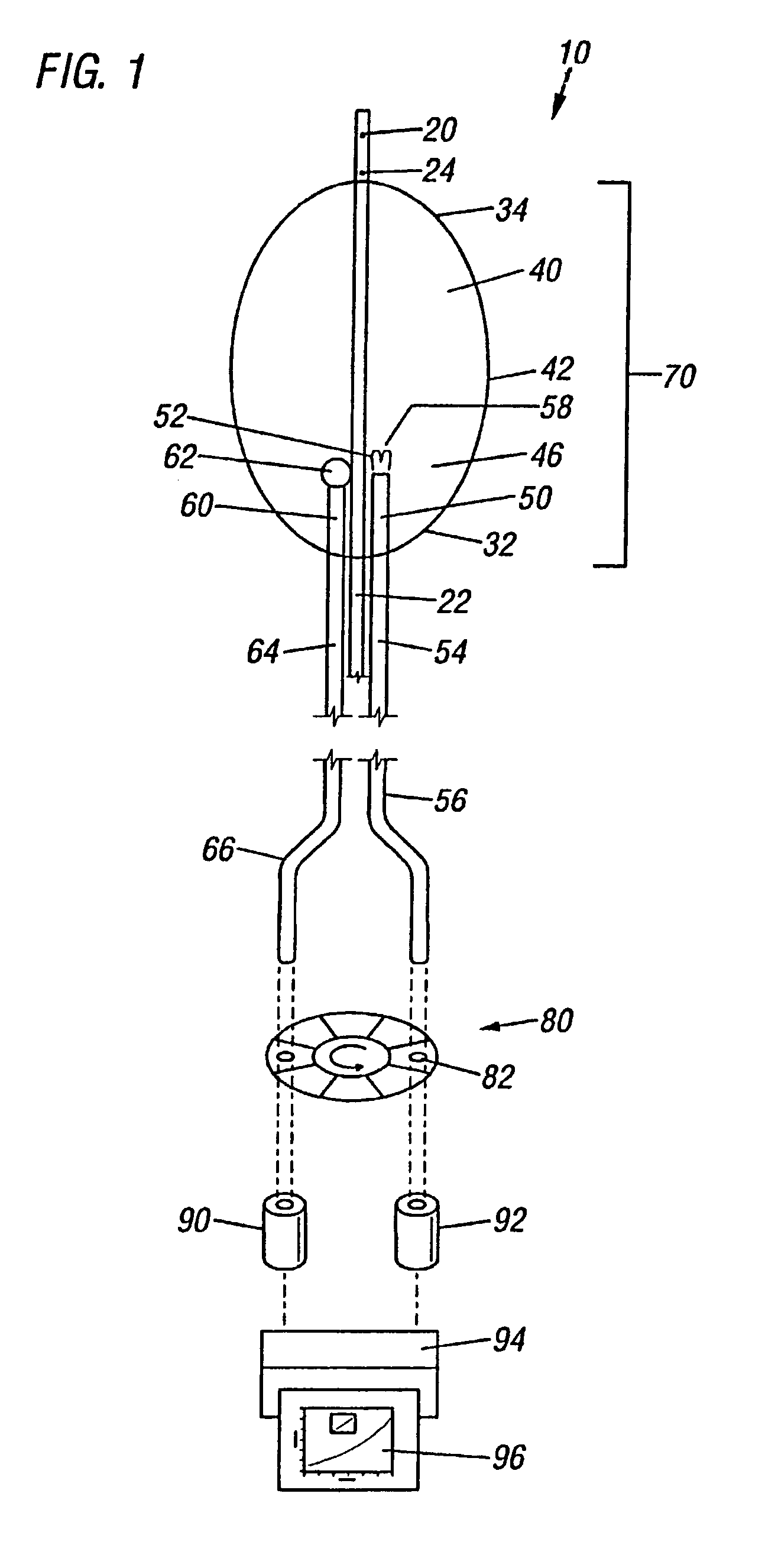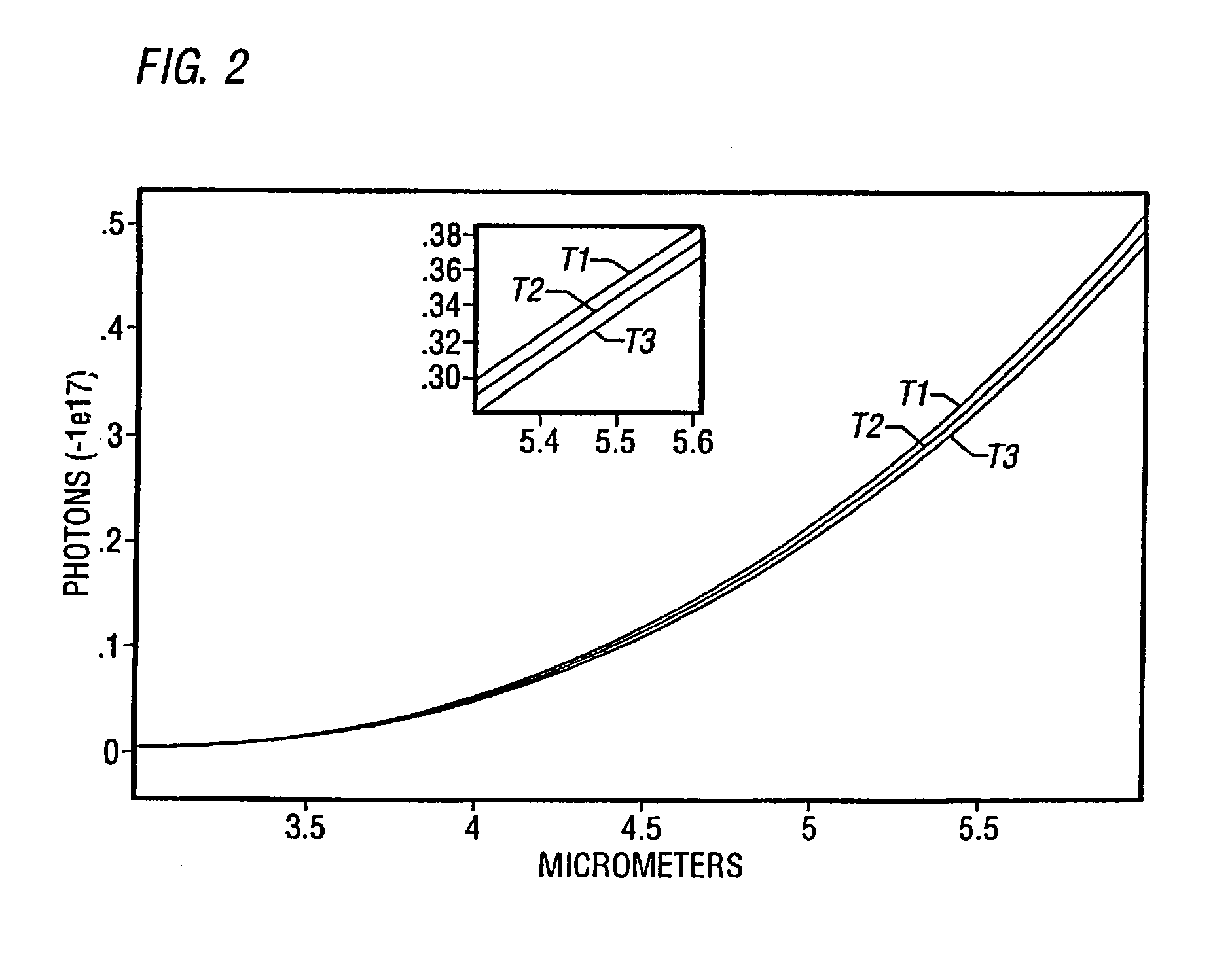Method of detecting vulnerable atherosclerotic plaque
a technology of atherosclerotic plaque and detection method, which is applied in the field of infrared sensing, can solve the problems of plaque rupture, restnosis or transplant vasculopathy, and the sensitivity and/or toxicity of the device that cannot be detected by the fiberoptic catheter of this patent, so as to reduce the incidence of restnosis, reduce the incidence of vasculopathy, and reduce morbidity and mortality
- Summary
- Abstract
- Description
- Claims
- Application Information
AI Technical Summary
Benefits of technology
Problems solved by technology
Method used
Image
Examples
example i
Methods
[0087]Fifty carotid endarterectomy specimens were studied in the living state after gross inspection by a pathologist. Visible thrombi, noted in about 30% of the specimens, were typically removed by gentle irrigation, suggesting that they were surgical artifacts. The indications for surgery were generally a carotid stenosis and transient ischemic attack or stroke.
[0088]Twenty-four specimens from 22 patients were examined at room temperature (20° C.). Another 26 specimens from 26 patients were examined in a humidified incubator at 37° C.
[0089]Within 15 minutes after removal of a specimen, a Cole-Parmer model 8402–20 thermistor with a 24-gauge needle tip (accuracy, 0.1° C.: time constant, 0.15) was used to measure the temperature of the luminal surface in 20 locations. Temperatures were reproducible (±0.1° C.), and most measurements were found to be within 0.2° C. of each other and thus were designated as the background temperature.
[0090]In most plaques, several locations with ...
example ii
Limitations of the Study
[0103]A potential confounder identified by the inventors is plaque angiogenesis (neovascularization). The inventors studied living plaques ex vivo. In vivo, the presence and tone of the vasae vasorum might influence the temperature. However, since plaque angiogenesis correlates with inflammation, Nikkari et al., Circulation 92:1393–1398 (1995) and both are considered risk factors for plaque rupture, it is likely that temperature will still be predictive in vivo.
[0104]The inventors also believe that one must consider that what is true for atherosclerotic plaque in the carotid arteries may not be true in other sites, for example, the coronary arteries. The pathology of the plaque is somewhat different in the two locations. (Van Damme, et al., Cardiovasc Pathol 3:9–17 (1994)) and the risk factors are also different. Kannel, J Cardiovasc Risk 1:333–339 (1994); Sharrett, et al., Arterioscler Thromb 14:1098–1104 (1994).
example iii
Potential of Spectroscopy, Tomography, and Interferometry
[0105]Infrared spectroscopy could prove useful in several ways. First, it should be able to corroborate the location of macrophages by the massive amounts of nitric oxide they produce, since nitric oxide has a characteristic near-infrared spectrum. Ohdan, et al., Transplantation 57:1674–1677 (1994). Near-infrared imaging of cholesterol has already been demonstrated. Cassis, et al., Anal Chem 65:1247–1256 (1993). Second, since infrared and near-infrared wavelengths penetrate tissue more deeply as wavelength increases, longer wavelengths should reveal metabolic activity in deeper (0.1- to 1-mm) regions.
[0106]This phenomenon could be used to develop computed infrared tomography, possibly in conjunction with interferometry, in which an incident beam is split by a moving mirror to produce a reference beam and a beam that is variably scattered and absorbed by the tissue. The nonsynchronous reflected wavelengths are reconstituted to ...
PUM
 Login to View More
Login to View More Abstract
Description
Claims
Application Information
 Login to View More
Login to View More - R&D
- Intellectual Property
- Life Sciences
- Materials
- Tech Scout
- Unparalleled Data Quality
- Higher Quality Content
- 60% Fewer Hallucinations
Browse by: Latest US Patents, China's latest patents, Technical Efficacy Thesaurus, Application Domain, Technology Topic, Popular Technical Reports.
© 2025 PatSnap. All rights reserved.Legal|Privacy policy|Modern Slavery Act Transparency Statement|Sitemap|About US| Contact US: help@patsnap.com



